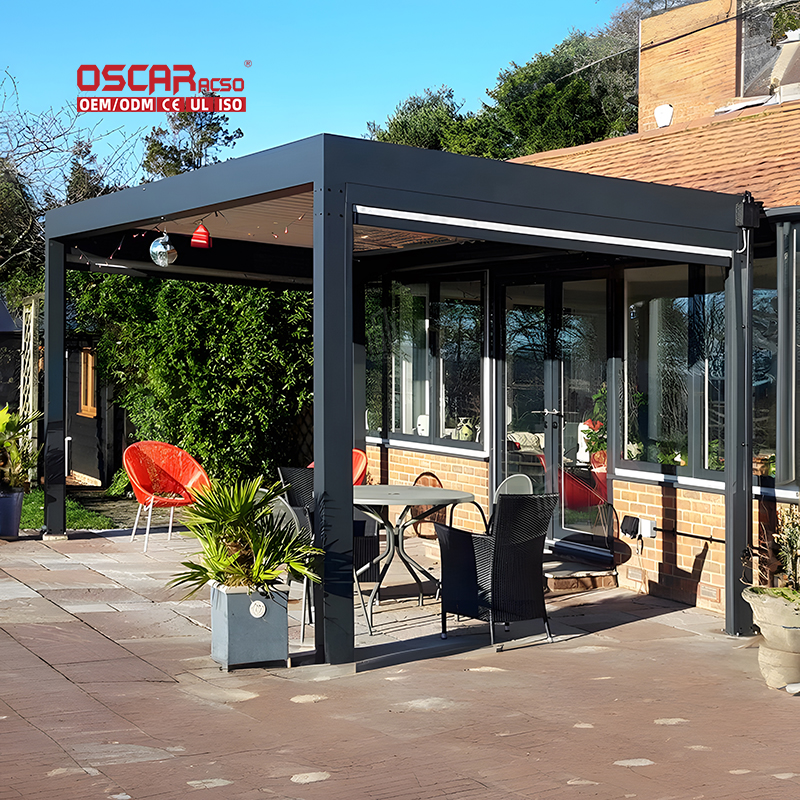Pergola Rafters, The Unsung Heroes of Your Outdoor Sanctuary
When we envision a pergola, our minds often drift to the lush vines, the dappled shade, or the elegant structure itself....
When we envision a пергола, our minds often drift to the lush vines, the dappled shade, or the elegant structure itself. But what truly makes this outdoor haven possible? 🤔 The answer lies in the rafters—those horizontal beams that form the roof framework. They’re not just functional; they’re the soul of your pergola, blending strength with style to create a space for relaxation, gatherings, and pure bliss. Without them, your dream oasis would simply collapse!
.jpg)
🔍 What Exactly Are Pergola Rafters?
Pergola rafters are the horizontal members that span across the top beams, providing support for shade elements like plants, fabrics, or louvers. They’re pivotal for:
- •
Distributing weight evenly to prevent sagging or collapse.
- •
Enhancing aesthetics through patterns, spacing, and decorative ends.
- •
Creating micro-climates by controlling sunlight and airflow.

Think of them as the backbone of your pergola—silent yet indispensable. 🌟
🌳 Material Choices: Wood, Metal, or Composite?
Selecting the right material impacts durability, maintenance, and visual appeal. Here’s a breakdown:
|
Material |
Pros |
Cons |
|---|---|---|
|
Wood |
Natural warmth, customizable |
Requires sealing/upkeep |
|
Aluminum |
Lightweight, rust-proof |
Can feel cold/industrial |
|
Vinyl |
Low maintenance, affordable |
Prone to cracking in heat |
|
Composite |
Eco-friendly, long-lasting |
Higher upfront cost |
In my experience, wood remains a favorite for its timeless charm, but composites are gaining traction for busy homeowners seeking durability. 💪
📏 Design Secrets: Spacing, Size, and Style
How do you optimize rafters for both function and beauty? Focus on three elements:
- 1.
Spacing: Closer gaps (12–16 inches) offer more shade, while wider ones (18–24 inches) allow sunlight for plants.
- 2.
Size: Thicker beams (e.g., 2×8 inches) handle heavy loads like snow or hanging baskets.
- 3.
Style: Curved or scalloped ends add a touch of elegance—perfect for romantic garden settings.
💡 Pro Tip: Always consult local building codes for wind and snow load requirements!
🛠️ Installation: DIY or Call a Pro?
Installing rafters isn’t rocket science, but precision matters. Key steps include:
- •
Measuring twice to ensure even spacing and alignment.

- •
Using joist hangers for secure attachments to beams.
- •
Weatherproofing with sealants (for wood) to prevent rot.
If you’re handy, DIY can save money, but for complex designs, hiring a pro ensures safety and longevity. 🧰
💎 Personal Take: Why Rafters Deserve the Spotlight
Having built several pergolas myself, I’ve seen how rafters make or break the design. 🌿 Once, using low-quality pine led to sagging within a year—a costly lesson! Now, I advocate for pressure-treated wood or aluminum for humid climates. Their role extends beyond support; they frame the sky, create play of light and shadow, and even influence how plants grow. Don’t underestimate their power to transform your backyard into a sanctuary!
❓ FAQs: Quick Fire Answers
Q: Can I use recycled materials for rafters?
.jpg)
A: Yes, but ensure they’re structurally sound and treated for outdoor exposure.
Q: How often should I maintain wood rafters?
A: Seal them every 2–3 years to prevent weathering and decay.
Q: What’s the ideal rafter spacing for climbing roses?
A: 14–16 inches allows vines to weave through without overcrowding.
.jpg)
🎯 Final Insight: Beyond the Basics
Did you know? In windy regions, spacing rafters closer can reduce wind lift by up to 30%! 🌪️ Also, modern trends see rafters doubling as lighting mounts—think string lights or LED strips for evening ambiance. So, while they might seem mundane, rafters are your canvas for creativity. Embrace them, and watch your outdoor space thrive! 😊



.jpg)